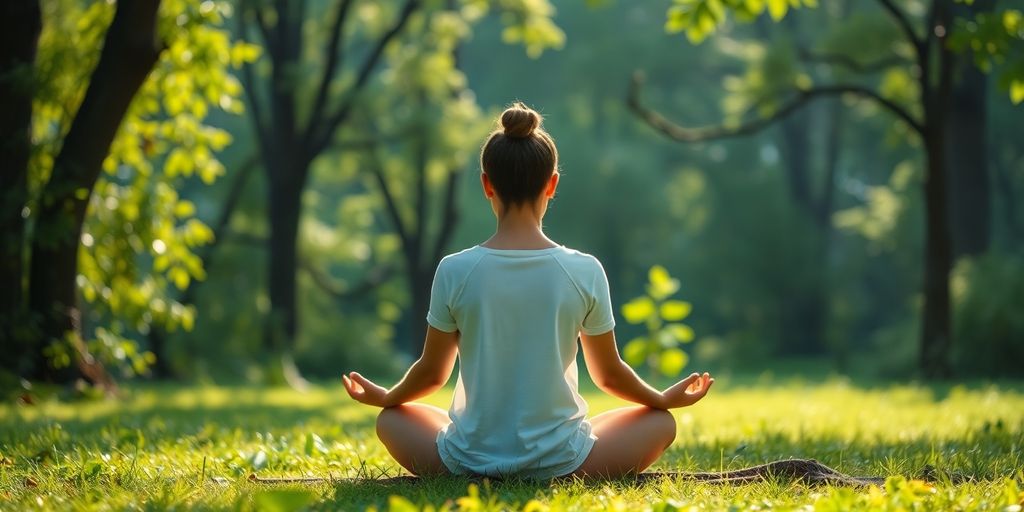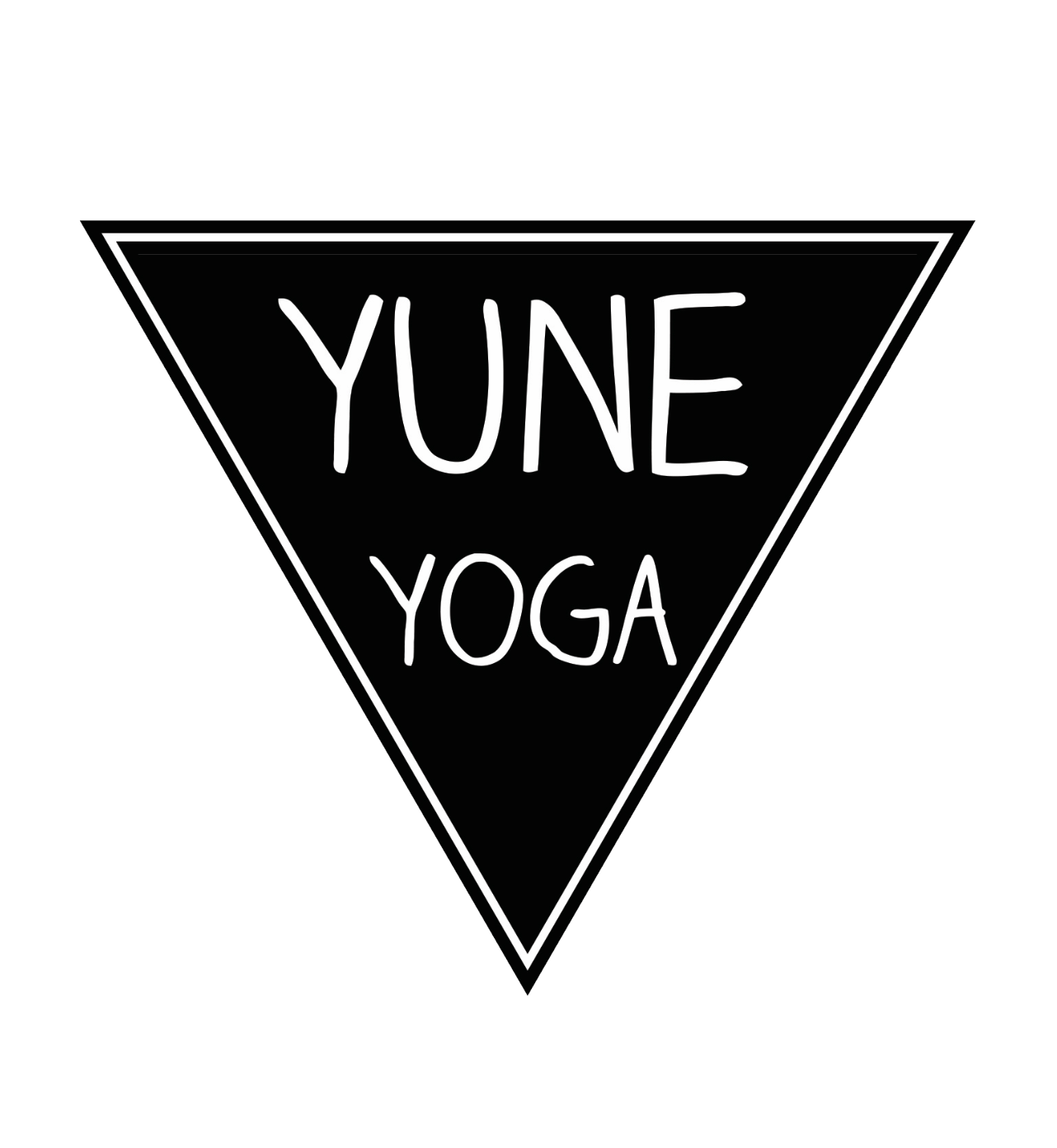
Unlocking Inner Peace: The Transformative Power of Chi Meditation
In today's fast-paced world, finding a moment of stillness can feel like an impossible task. Chi meditation offers a way to reconnect with your inner self and discover a sense of peace that often feels out of reach. By tapping into the flow of energy within us, chi meditation can transform your mental state and enhance your overall well-being. Whether you're a beginner or looking to deepen your practice, this guide will explore how chi meditation can help you cultivate tranquility in your life.
Key Takeaways
- Chi meditation helps balance your life force energy, promoting physical and mental well-being.
- Creating a dedicated meditation space can significantly enhance your practice.
- Incorporating breathing techniques and visualization can deepen your meditation experience.
- Practicing mindfulness in daily activities reinforces the benefits of chi meditation.
- Overcoming challenges in meditation requires patience and consistent effort.
Understanding Chi Meditation
The Origins of Chi Meditation
Chi meditation, at its core, is an ancient practice with roots deeply embedded in Chinese culture and philosophy. It's not just about sitting still; it's about connecting with something bigger than yourself. The practice is thought to have evolved from ancient Taoist and Buddhist traditions, emphasizing the cultivation and circulation of chi, or vital energy.
Think of it like this: for centuries, people in China have been exploring ways to improve their health and well-being through movement, breath, and mental focus. Chi meditation is one of the results of that exploration. It's been passed down through generations, evolving and adapting along the way. It's pretty cool to think about how something so old can still be so relevant today.
Key Principles of Chi Meditation
Okay, so what's actually involved? Well, there are a few key ideas that make up chi meditation. It's more than just sitting quietly. Here are some of the main principles:
- Breath Control: Breathing is super important. It's not just about getting air into your lungs; it's about using your breath to guide and direct the flow of chi throughout your body.
- Mindful Movement: Some forms of chi meditation involve gentle movements, like in tai chi or qigong. These movements help to loosen up your body and get your energy flowing.
- Mental Focus: You need to be present. That means paying attention to your breath, your body, and your thoughts without getting carried away by them. It's about observing, not judging.
- Visualization: A lot of chi meditation involves visualizing energy moving through your body. This can help to clear blockages and promote healing.
The goal is to create a harmonious flow of energy within yourself. When your chi is flowing smoothly, you feel balanced, healthy, and at peace. When it's blocked or stagnant, you might experience physical or emotional problems.
Benefits of Practicing Chi Meditation
So, why bother with all of this? What's the point of spending time focusing on your breath and moving your body in weird ways? Well, there are actually a lot of potential benefits to practicing chi meditation. It's not a magic bullet, but it can be a really helpful tool for improving your overall well-being. Here are a few of the things that people often report:
- Reduced stress and anxiety
- Improved sleep quality
- Increased energy levels
- Better focus and concentration
- Enhanced emotional balance
| Benefit | Description | Benefit | Description the origins of chi meditation tai chi are rooted in ancient Chinese culture, emphasizing the cultivation of chi.
Techniques to Enhance Chi Meditation
- Breathing Techniques: Deep, mindful breathing is key to directing chi.
- Visualization: Visualizing energy flow can enhance the experience.
- Movement: Incorporating movement, like in yoga, can help release tension and improve energy flow.
Creating a Peaceful Meditation Space
- Environment: Choose a quiet, uncluttered space.
- Tools: Consider using Reiki healing stones to amplify energy.
- Mood: Set the mood with soft lighting and calming sounds.
Techniques to Enhance Chi Meditation
Chi meditation is cool, but sometimes you need a little something extra to really get the most out of it. It's like adding spices to a dish – it just elevates the whole experience. I've been messing around with different techniques for a while now, and here's what I've found works best for me. Maybe it'll help you too!
Breathing Techniques for Chi Flow
Breathing is the foundation of pretty much any meditation, but it's especially important in chi meditation. You're trying to get that energy flowing, right? Well, your breath is the pump. I like to start with some simple deep belly breaths. Inhale slowly, feeling your stomach expand, and then exhale completely, pushing all the air out.
Then, I move on to some more specific techniques. One I really like is alternate nostril breathing. You close one nostril with your finger and inhale through the other, then switch. It's supposed to balance the energy in your body. Another good one is focusing on the pause between breaths. It's a tiny moment of stillness that can be really powerful. I find that mindfulness meditation helps me stay focused on my breath.
Visualization Practices in Chi Meditation
Okay, so this one might sound a little woo-woo, but trust me, it works. Visualization is all about using your imagination to guide the flow of chi. I like to imagine a ball of light in my lower abdomen, which is supposed to be the center of your energy. As I breathe, I visualize that light growing brighter and warmer, and then spreading throughout my body.
Another thing I do is visualize myself in nature. I imagine I'm standing under a waterfall, and the water is washing away all the stress and tension. Or I picture myself in a forest, surrounded by trees, and I can feel their energy flowing into me. It sounds silly, but it really helps me relax and focus. It's like a mental vacation. I find that loving-kindness meditation helps me cultivate compassion for myself and others.
Incorporating Movement into Chi Meditation
Sitting still for long periods can be tough, right? That's where movement comes in. You don't have to do a full-on Tai Chi routine, but even some gentle movements can make a big difference. I like to start with some simple stretches, like neck rolls and shoulder shrugs. It helps to loosen up any tension in my body.
Then, I might do some slow, flowing movements, like raising my arms and circling them. The key is to move with your breath, so each movement is smooth and controlled. It's like a dance, but a really slow, chill dance. I find that movement meditation helps me align my body and mind.
I've found that combining these techniques really helps me get into a deeper state of meditation. It's all about finding what works best for you, so don't be afraid to experiment. The most important thing is to be patient and persistent. It takes time to develop these skills, but it's worth it in the end. I also find that Zen meditation helps me stay present in the moment.
Creating a Peaceful Meditation Space
It's hard to get into the right headspace for meditation if your surroundings are chaotic. Think of your meditation space as a sanctuary – a place where you can disconnect from the outside world and connect with your inner self. The goal is to create an environment that supports relaxation, focus, and a sense of calm.
Choosing the Right Environment
Finding the right spot is key. It doesn't have to be a whole room; even a corner can work. Look for a place that's relatively quiet and free from distractions. Consider these points:
- Minimize Noise: Choose a location away from loud noises like traffic or household appliances. If complete silence isn't possible, consider using noise-canceling headphones or a white noise machine.
- Temperature: Make sure the space is comfortably warm or cool. Being too hot or too cold can be a major distraction.
- Privacy: Select a spot where you won't be interrupted. Let family members or housemates know when you'll be meditating so they can respect your time and space.
Essential Tools for Chi Meditation
While Chi meditation doesn't require a lot of equipment, a few items can help you create a more conducive environment:
- Cushion or Mat: A comfortable cushion or mat can make sitting for extended periods much easier. Experiment with different types to find what works best for you.
- Blanket: Having a light blanket on hand can help you stay warm and cozy, especially during longer meditation sessions.
- Timer: A timer can help you keep track of your meditation time without constantly checking the clock. Set it and forget it!
Setting the Mood with Sound and Light
Sound and light can have a big impact on your mood and ability to relax. Here are some ways to use them to create a peaceful atmosphere:
- Lighting: Opt for soft, natural light whenever possible. If that's not an option, use lamps with dimmable bulbs to create a warm and inviting glow. Avoid harsh fluorescent lighting.
- Sound: Some people find that soft, ambient music or nature sounds help them relax and focus. Others prefer silence. Experiment to see what works best for you. Consider using a sound machine with options like rain, ocean waves, or forest sounds.
- Aromatherapy: Certain scents, like lavender or chamomile, are known for their calming properties. Consider using an essential oil diffuser to gently scent the air. Just be sure to use scents that you find pleasant and that don't cause any irritation.
Creating a dedicated meditation space is an investment in your well-being. It's a place where you can escape the stresses of daily life and reconnect with yourself. By carefully considering the environment, tools, and sensory elements, you can create a sanctuary that supports your Chi meditation practice and helps you cultivate inner peace.
Integrating Chi Meditation into Daily Life
It's one thing to understand Chi Meditation, and another to actually make it a part of your everyday life. It's like knowing you should eat healthy, but then reaching for the chips. The real magic happens when you weave it into your routine, making it as natural as brushing your teeth. It's not always easy, but the rewards are so worth it.
Establishing a Consistent Practice
The key to seeing real benefits from Chi Meditation is consistency. Think of it like watering a plant – you can't just flood it once and expect it to thrive. You need to give it regular, consistent care. Start small. Even five minutes a day is better than nothing.
Here's a simple way to build a routine:
- Pick a time: Morning, noon, or night – whatever works best for you. I find mornings are great because it sets a calm tone for the day. But if you're a night owl, evenings might be better.
- Set a reminder: Our lives are busy. Put it in your calendar, set an alarm, or stick a note on your mirror. Whatever it takes to remind you.
- Don't break the chain: Jerry Seinfeld had a trick for writing jokes every day. He'd mark an 'X' on a calendar for each day he wrote. The goal was to never break the chain of 'X's. Try that with your meditation practice.
It's okay to miss a day here and there. Life happens. But don't let one missed day turn into two, then three. Get back on track as soon as you can. The important thing is to keep showing up for yourself.
Mindfulness in Everyday Activities
Chi Meditation isn't just about sitting still. It's about cultivating a mindful presence that you can carry with you throughout the day. It's about paying attention to the little things, like the feel of the sun on your skin or the taste of your morning coffee. It's about being fully present in each moment, instead of getting lost in your thoughts. You can achieve mindfulness in many ways.
Here are some ideas:
- Mindful walking: Pay attention to each step, the way your feet feel on the ground, the movement of your body.
- Mindful eating: Savor each bite, notice the flavors and textures, and eat slowly.
- Mindful listening: Really listen to what people are saying, without interrupting or planning your response.
Using Chi Meditation for Stress Relief
Life is stressful. There's no way around it. But Chi Meditation can be a powerful tool for managing stress and finding inner peace, even in the midst of chaos. When you feel overwhelmed, take a few minutes to practice some simple breathing exercises or visualizations. Even a short state of mind break can make a big difference.
Here's a quick stress-relief technique:
- Find a quiet space: Even if it's just for a few minutes.
- Close your eyes: Or focus on a point in front of you.
- Breathe deeply: Inhale slowly through your nose, exhale slowly through your mouth.
- Visualize: Imagine a peaceful scene, like a beach or a forest. Focus on the details – the sounds, the smells, the colors.
- Let go: Release any tension or stress with each exhale. You can also try Tai Chi to help relieve stress.
The Role of Energy in Chi Meditation
Understanding Life Force Energy
Okay, so, in Chi Meditation, energy is kind of a big deal. We're not talking about the kind you get from a coffee, but more like the life force energy that keeps you, you. It's often called "Chi" or "Qi," and it's believed to flow through your body, affecting your health and well-being. Think of it as the electricity that powers your internal systems.
- It's the foundation of your vitality.
- It influences your physical and mental state.
- It's something you can learn to control and direct.
It's not some mystical thing that's impossible to understand. It's more like tuning into your body's natural rhythms and working with them, not against them.
Balancing Energy Centers in the Body
Your body has these energy centers, often called chakras, that are like little hubs for Chi. When these centers are balanced, everything flows smoothly. But when they're blocked, you might feel sluggish, stressed, or even sick. Chi Meditation helps you clear those blockages and get everything flowing again. It's like unclogging a drain – suddenly, everything works better.
| Chakra | Location | Associated With |
|---|---|---|
| Root | Base of Spine | Grounding, Security |
| Sacral | Lower Abdomen | Creativity, Emotions |
| Solar Plexus | Upper Abdomen | Power, Confidence |
| Heart | Center of Chest | Love, Compassion |
| Throat | Throat | Communication, Truth |
| Third Eye | Forehead | Intuition, Insight |
| Crown | Top of Head | Spirituality, Connection |
The Connection Between Energy and Emotions
Ever notice how your emotions can affect your energy levels? When you're stressed, you feel drained. When you're happy, you feel energized. That's because your emotions and your Chi are closely linked. Chi Meditation can help you regulate your emotions by balancing your energy flow. It's like hitting the reset button on your emotional state. Regular practice can lead to improved mood, less anxiety, and increased self-esteem. Reiki Meditation encourages emotional balance, reduces stress, and promotes mindfulness.
- Recognize the emotion.
- Acknowledge its presence without judgment.
- Use breathing techniques to calm the body.
Overcoming Challenges in Chi Meditation

Let's be real, starting any new practice, especially one that involves sitting still and focusing, can be tough. Chi meditation is no exception. You might find your mind wandering, your body aching, or just feel plain restless. Don't worry, it happens to everyone. The key is to acknowledge these challenges and develop strategies to work through them. Consistency and self-compassion are your best allies here.
Common Obstacles to Meditation
So, what are some of the usual suspects that can derail your chi meditation practice? Here are a few I've encountered, and I bet you might recognize some:
- A Wandering Mind: Thoughts popping up like crazy, making it impossible to focus. This is probably the most common one.
- Physical Discomfort: Aches, stiffness, or just plain fidgeting. Sitting still can be surprisingly challenging.
- Lack of Time: Feeling like you just don't have enough minutes in the day to dedicate to meditation. I get it, life is busy.
- Doubt and Frustration: Questioning whether you're doing it right or feeling discouraged when you don't see immediate results.
Techniques for Staying Focused
Okay, so you know the challenges. Now, what can you do about them? Here are some techniques that have helped me stay on track:
- Breath Awareness: When your mind wanders, gently bring your attention back to your breath. Feel the air entering and leaving your body. This is your anchor.
- Body Scan: If you're feeling restless, try a quick body scan. Notice any areas of tension and consciously relax them.
- Guided Meditations: Use a meditation community or app to guide you through your practice. This can be especially helpful when you're struggling to focus.
- Loving-Kindness Meditation: Try cultivating compassion for yourself. Acknowledge your struggles and remind yourself that it's okay to have off days.
It's important to remember that meditation isn't about emptying your mind. It's about training your attention. Think of it like exercising a muscle. The more you practice, the stronger your focus will become.
Building Patience and Persistence
Meditation is a marathon, not a sprint. It takes time and effort to develop a consistent practice and experience the full benefits. Here's how to cultivate patience and persistence:
- Start Small: Don't try to meditate for an hour right off the bat. Begin with just five or ten minutes a day and gradually increase the duration as you feel more comfortable.
- Set Realistic Expectations: Don't expect to become a zen master overnight. Be patient with yourself and celebrate small victories.
- Establish a Routine: Schedule your meditation practice into your day like any other important appointment. This will help you stay consistent.
- Journal Your Progress: Keep a meditation journal to track your experiences and reflect on your progress. This can help you stay motivated and identify areas where you need to adjust your approach.
| Challenge | Solution |
|---|---|
| Wandering Mind | Return to breath, use guided meditation |
| Physical Discomfort | Adjust posture, try movement meditation |
| Lack of Time | Meditate for shorter periods, schedule it |
| Doubt/Frustration | Practice self-compassion, track progress |
Exploring Advanced Chi Meditation Practices

Deepening Your Practice with Advanced Techniques
Okay, so you've got the basics down. You can sit (mostly) still, breathe (somewhat) consciously, and maybe even feel a little tingle here and there. Now what? It's time to explore some advanced techniques to really crank up your meditation practice. Think of it like leveling up in a video game.
- Microcosmic Orbit Meditation: This involves circulating energy along specific pathways in the body. It's like giving your internal energy system a superhighway to travel on.
- Fusion of the Five Elements: This is where you start working with transforming negative emotions into positive energy. Sounds intense, right? It is.
- Kan and Li: This is an advanced Taoist practice involving balancing water and fire energies within the body. It's not for the faint of heart, and definitely requires a solid foundation in the basics.
Combining Chi Meditation with Other Modalities
Chi meditation doesn't have to be a solo act. It plays well with others! Think of it as the lead singer in a band – it can shine on its own, but it's even better when combined with other instruments. For example, you can combine it with Tai Chi or Qigong for a powerful synergy of movement and stillness. Or, try integrating it with acupuncture or acupressure to further stimulate energy flow. Some people even find that combining it with creative arts like painting or music can be incredibly beneficial. The possibilities are pretty endless, so experiment and see what resonates with you.
The Journey Towards Mastery in Chi Meditation
Mastery isn't a destination; it's a journey. There's no finish line, no gold medal, no certificate that says, "Congratulations, you're a Chi Master!" It's more about the ongoing process of deepening your understanding and refining your practice. It's about cultivating patience, persistence, and a genuine curiosity about the inner workings of your energy system.
The path to mastery is paved with consistent practice, mindful observation, and a willingness to learn from both successes and setbacks. It's about embracing the journey, not just chasing the destination.
Here are some things to keep in mind:
- Consistency is key: Even short, regular sessions are more effective than sporadic, long ones.
- Listen to your body: Don't push yourself too hard, especially when starting out with advanced techniques.
- Find a qualified teacher: A good teacher can provide guidance, support, and help you avoid common pitfalls.
Your Journey to Inner Peace Begins Now
Meditation can really change your life. It’s not just about sitting quietly; it’s about finding that calm spot inside you. Whether you like the gentle approach of mindfulness or the quiet of Zen, there’s something out there for everyone. I know life gets busy—trust me, I’m a mom of two! But even a few minutes of meditation each day can help you feel more centered and focused. It’s a reminder to be in the moment, for yourself and your loved ones. So, give these meditation styles a try. Each breath you take brings you closer to that peace we all want.
Frequently Asked Questions
What is Chi meditation?
Chi meditation is a practice that helps you connect with your inner energy, known as 'Chi'. It involves focusing your mind and body to achieve a state of peace.
Where did Chi meditation come from?
Chi meditation has its roots in ancient Chinese traditions, where it was used to promote health and balance in the body.
What are the main benefits of Chi meditation?
Practicing Chi meditation can help reduce stress, improve focus, and enhance your overall well-being.
How can I improve my Chi meditation practice?
You can enhance your practice by using specific breathing techniques, visualizing calming images, or even incorporating gentle movements.
What should I have in my meditation space?
To create a peaceful meditation space, choose a quiet area, use comfortable cushions, and consider adding calming scents or soft lighting.
How can I make Chi meditation a part of my daily life?
You can integrate Chi meditation into your daily routine by setting aside a few minutes each day to practice mindfulness, even during simple tasks.


